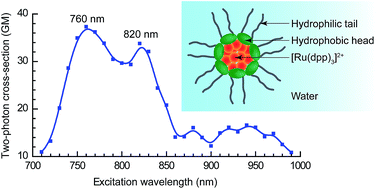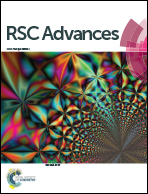Easily prepared ruthenium-complex nanomicelle probes for two-photon quantitative imaging of oxygen in aqueous media
Abstract
We present a simple and inexpensive technique to enable 3D, high-resolution, and quantitative imaging of dissolved oxygen in aqueous media using a commercially available hydrophobic dye, [Ru(dpp)3]2+. The dye is encapsulated in nanomicelles formed by a poloxamer (a biocompatible surfactant), allowing for uniform dispersion in aqueous media without long, complex, and expensive chemical synthesis procedures. The nanomicelle probes are tested and found to remain stable for several months in water and for several hours in biological media. The probes are sufficiently large in size for vasculature retention and enable intravenous oxygen imaging in vivo. The two-photon cross-section of the [Ru(dpp)3]2+ nanomicelle probes surpass that of the well-established and widely used oxygen-sensitive probes in multiphoton microscopy. We also characterize the oxygen-sensitivity of the probes as a proof of their viability as low cost and easily prepared markers for multiphoton quantitative oxygen imaging in vivo and for other applications in aqueous media.

- This article is part of the themed collection: Luminescence and photophysical properties of metal complexes

 Please wait while we load your content...
Please wait while we load your content...